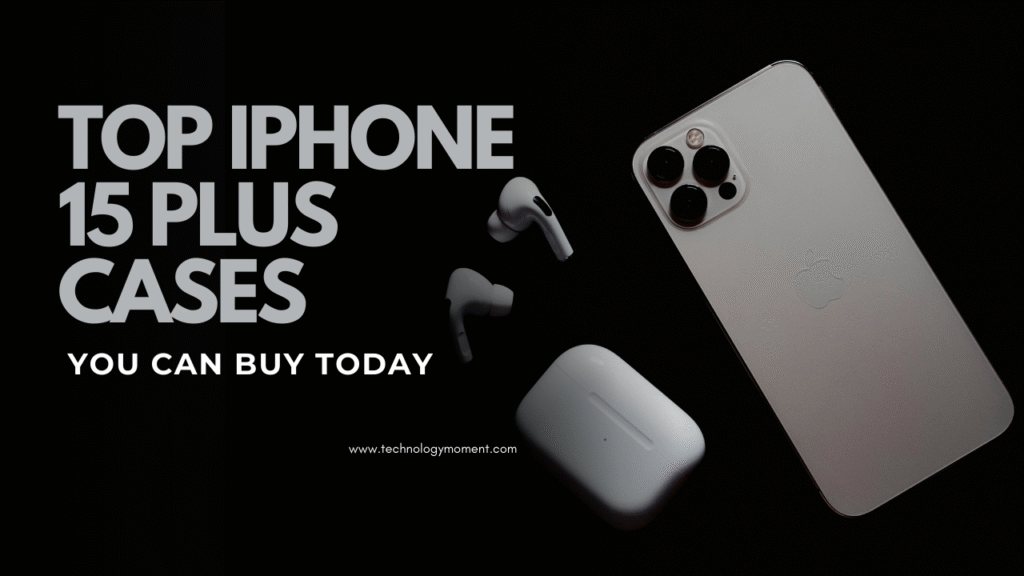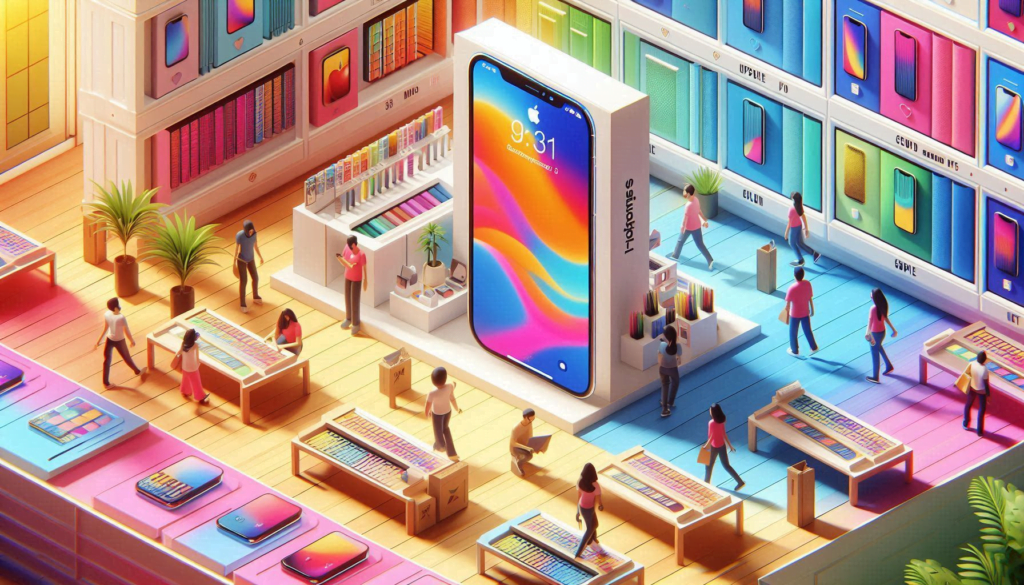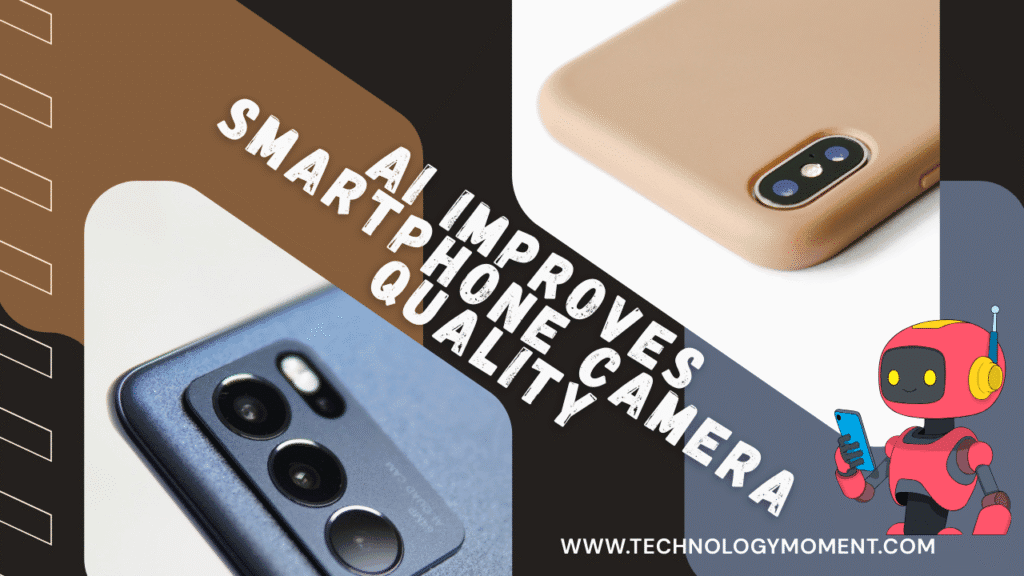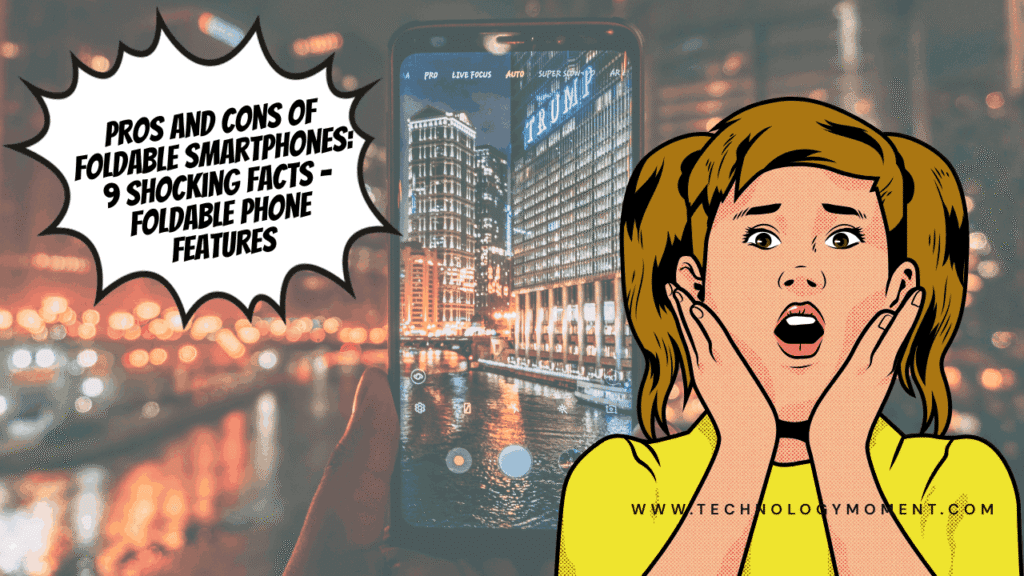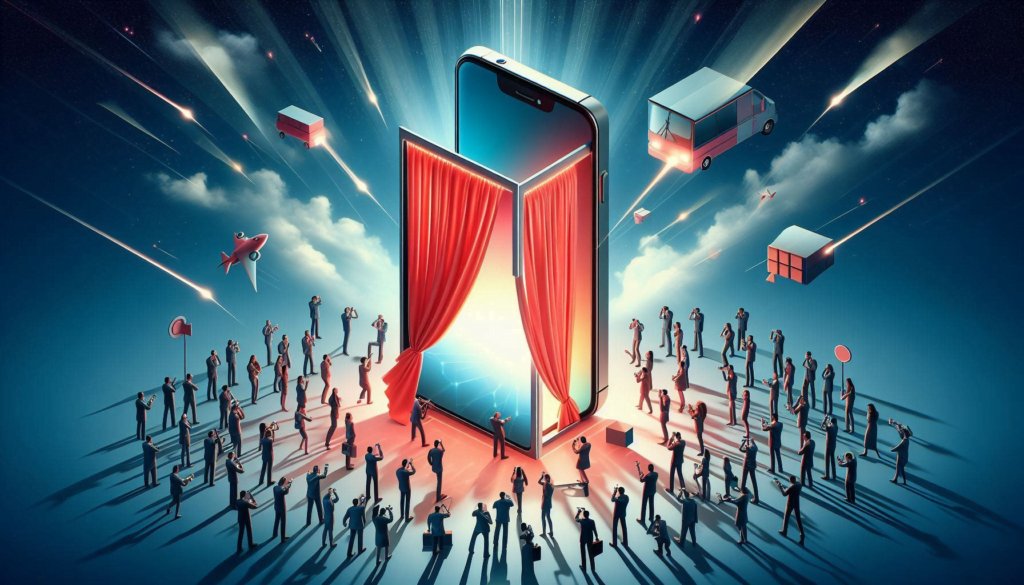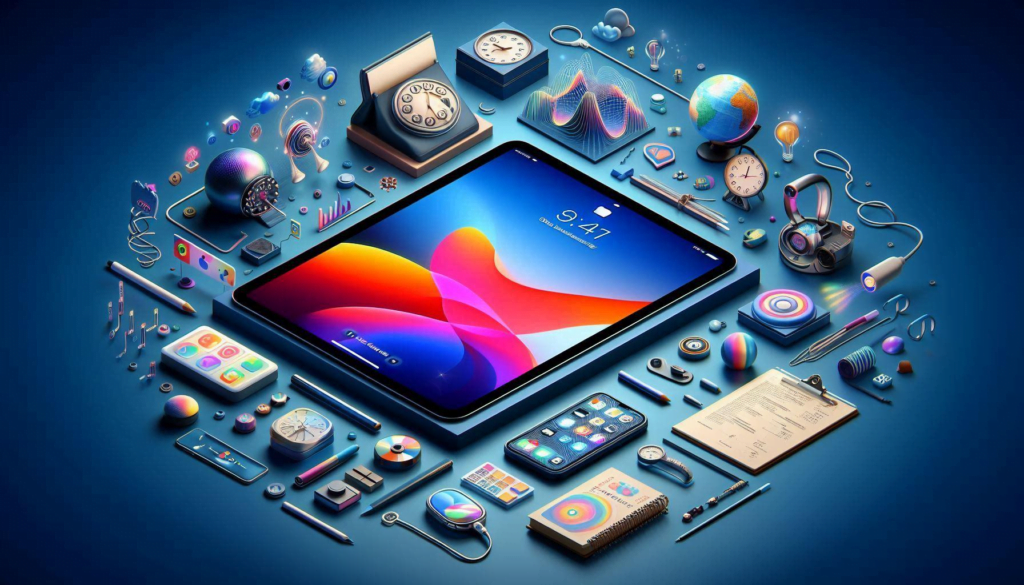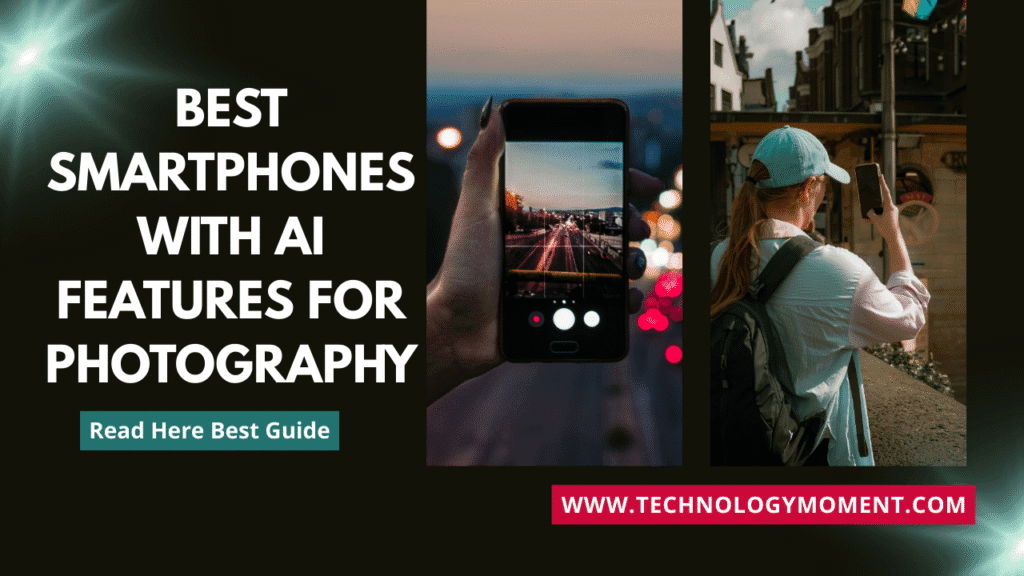
Welcome to Technology Moment. This is your place to learn about the newest gadgets and trends. Today, we talk about a big change in phone cameras — AI in smartphone photography.
AI means Artificial Intelligence. It helps your phone camera think and act fast. It can see a face, a dog, or a sunset and pick the best settings in a flash. It makes colors bright and photos sharp. Your phone does the work for you.
With AI, every photo looks clear and bright. Night shots look bright, too. Portraits look soft and natural. In this post, we show you how AI helps phone cameras. We also list the best smartphones with AI features for photography you can buy right now.
Table of Contents
Key AI Features That Enhance Photography
Artificial Intelligence inside your smartphone camera is like having a skilled photo editor built right into your pocket. Instead of you having to adjust every little setting, AI learns from millions of photos to predict the perfect shot for you. It makes your phone smarter with every click.
Scene Detection and Auto Adjustment
Imagine lifting your phone to capture a beach sunset, and without you touching a thing, the camera automatically detects it’s a sunset scene. It brightens the colors, sharpens the details, and adjusts the white balance so the sky pops and the water looks like glass. This is scene detection. AI studies what’s in the frame — faces, trees, pets, food, night skies — and applies custom settings instantly. No need to scroll through modes or filters. It’s like having a personal photographer who knows exactly what you want.
AI-Powered Portrait and Bokeh Effects
Portraits look stunning when the background melts away into a soft blur. AI makes this possible by separating your subject from the background with pixel-level precision. It simulates the effect of a professional DSLR lens, creating natural depth even when you’re just using your phone. AI keeps hair strands sharp, skin tones smooth, and edges clean so the subject stands out beautifully.
Night Mode and Low-Light Enhancements
Taking photos in low light used to be a nightmare. AI solves this by capturing multiple frames in milliseconds, then merging them into one crisp image. It brightens dark areas without blowing out highlights, reduces noise, and reveals colors you didn’t even notice with your eyes. Suddenly, dim restaurants, city nights, and candle-lit rooms turn into rich, vibrant photos.
Real-Time Image Processing and HDR
AI doesn’t just take a picture; it processes it instantly. High Dynamic Range (HDR) powered by AI balances bright skies with dark shadows so you see every detail. Clouds look dramatic, landscapes pop, and selfies glow even against tricky backlighting. Because the processing is real-time, you see exactly how your photo will turn out before you press the shutter.
AI Video Stabilization and Editing
If you’ve ever filmed a video while walking, you know how shaky footage can look. AI stabilizes every frame, making videos appear as though they were shot on a gimbal. It predicts motion, smooths out jerks, and even helps with auto-framing your subject. Some phones also use AI to edit your clips automatically — trimming awkward starts and finishes, fixing lighting, and enhancing colors. This makes mobile filmmaking easy for anyone, anywhere.
Top Smartphones with AI Features for Photography (2025 Edition)
The phones listed below aren’t just phones — they’re creative tools designed for people who want incredible photos and videos without technical headaches. Each brand brings its own AI magic to the camera, making them stand out worldwide.
Apple iPhone 15 Pro Max – Smart HDR & Deep Fusion
Apple’s iPhone 15 Pro Max feels like a mini studio in your pocket. It’s Smart HDR automatically balances highlights and shadows, while Deep Fusion analyzes textures at a pixel level. You’ll notice sharper details on clothes, hair, and even tiny patterns. The phone also excels at video with cinematic AI modes that adjust focus dynamically, giving your clips a film-like quality.
Samsung Galaxy S24 Ultra – Expert RAW and AI Zoom
Samsung’s Galaxy S24 Ultra takes AI to the next level with Expert RAW and AI Zoom. Whether you’re shooting a city skyline or your pet running across a field, the AI knows how to maintain sharpness even at extreme zoom levels. The phone also improves night photography with advanced noise reduction and real-time exposure control.
Google Pixel 9 Pro – Best AI Computational Photography
The Pixel 9 Pro shows off Google’s strength in software. Its AI computational photography can fix blurry faces, erase unwanted objects, and enhance colors naturally. Night Sight has been refined to make low-light shots crystal clear. For travelers and casual shooters alike, it’s one of the easiest phones to point and shoot while still getting stunning results.
OnePlus 13 Pro – AI Portrait and Hyper Stabilization
OnePlus 13 Pro focuses on portraits and video stability. Its AI can adjust lighting around faces to create studio-quality shots. Hyper Stabilization means your action videos look smooth, even if you’re running or biking. This is great for vloggers or anyone who loves capturing life in motion.
Xiaomi 15 Ultra – AI Night Vision and Detail Enhancement
Xiaomi’s 15 Ultra is built for extreme conditions. Its AI Night Vision mode can capture stars in the sky or details in very dim light that most other phones miss. Detail Enhancement technology sharpens every pixel, making landscapes, architecture, and even indoor shots look like they came from a DSLR.
Vivo X100 Pro – Professional AI Camera with Zeiss Optics
Vivo partnered with Zeiss to deliver a pro-level camera system. The AI handles everything from lens distortion correction to skin tone adjustments. Its portrait mode mimics the look of high-end Zeiss lenses, while the video modes adapt automatically to changing light. For creators, this phone combines hardware and AI beautifully.
Comparing AI Photography Features Across Brands
Each phone brand uses AI in its own way. Apple makes photos look natural. It’s Smart HDR and Deep Fusion that find the right balance of light and color. Samsung makes photos bold. Its AI zoom, night shots, and Expert RAW make details stand out. Google Pixel phones are famous for sharp, clear pictures. Their AI works well in dark places and for portraits.
OnePlus aims for speed. Its AI keeps moving shots clear and stable. Xiaomi’s AI Night Vision pulls more detail out of dark scenes. Vivo works with Zeiss optics to give pro-level color and soft background blur.
These styles feel very different. Apple is calm and true to life. Samsung is vivid and dramatic. Google is crisp and balanced. OnePlus is smooth and easy to use. Xiaomi gives big AI features at a low price. Vivo leans toward expert control. Pick the brand that matches how you like to shoot. A travel vlogger may need Samsung’s zoom. A street photographer may love Google’s night shots. An editor may prefer Apple or Vivo for color control.
How to Choose the Right AI Camera Smartphone
Start by thinking about what you shoot most. Do you take pictures at night? Look for a phone with a strong AI night mode, like Pixel or Xiaomi. Do you post bright photos to social media? Samsung may be better. Do you want natural photos? Apple does that well.
Next, think about control. Some AI systems do the work for you. This is good for beginners. Others let you adjust more. Vivo and Samsung give you that with Zeiss tools or Expert RAW.
Check updates too. AI gets smarter over time. A phone can improve after you buy it.
Finally, think about your budget. High-end phones have top AI tools. But mid-range phones like OnePlus or Xiaomi now give you great AI too. Pick the phone that fits your style and your wallet. This way, your phone becomes a partner in your creativity, not just a gadget.
Future of AI in Smartphone Photography
AI in smartphone photography is moving fast. Only a few years ago, a phone camera could take a photo but did little else. Now, AI helps the phone see the scene, change settings on its own, and give you a much better image. The next stage will go even further. Your phone will not only react to what you shoot. It will predict what you want to shoot before you even tap the screen.
Think of this as having a smart photo guide in your pocket. When you point the phone at a street or a landscape, it will study the light, colors, and movement. It will then build a plan. It will pick the best moment, freeze motion, and balance the light so the final photo looks natural and bright. This is called predictive photography, and it will be common in the next few years.
Smart composition will also leap. Right now, many phones offer simple guides or grids. In the future, AI will quietly adjust your framing, crop the shot, and even move digital elements to create a balanced photo. It will do this in real time, like an invisible director, so every shot feels like a scene from a movie.
Low-light photos will improve the most. Today’s night mode combines many frames to create one image. Future AI systems will go further. They will read light almost like the human eye. Dark areas will show more detail, and bright areas will keep their glow without blowing out. You will see clear textures and smooth colors in night scenes that once looked dull or noisy.
Color will become richer and more real. AI will match tones to what you actually see. Sky blues, skin tones, and shadows will look true and soft. The result will be photos that feel alive rather than digital.
Video will also change in a big way. AI stabilization will get so good that even a fast run or a bumpy car ride will look smooth. Editing will be instant. You will be able to change the background, adjust lighting, or add cinematic effects right on your phone. It will feel like you have a studio in your hand.
Personalization is another key trend. Your phone will learn from you. It will notice what style you like, such as bright colors or soft focus, and then apply it on its own. Over time, every picture and video will feel like it was made just for you. This will make smartphone photography more personal and fun for people all over the world.
AI will also improve accessibility. People with little or no experience will take great photos without needing lessons. The phone will do the hard work in the background. It will choose the settings, focus, and style automatically. This will make high-quality photography open to everyone, not just experts.
All these changes point to a big idea: AI will turn the smartphone camera from a simple tool into a creative partner. It will work with you, not just for you. This is why the future of AI in smartphone photography is so exciting and so global. Whether you are in a busy city, a quiet village, or on a remote beach, the phone in your hand will be ready to capture the moment with skill and style.
Conclusion
AI in smartphone photography is changing how we see the world. It has already made phones smarter, faster, and more creative. Soon, it will take another big step. It will make every photo and video a work of art, no matter who takes it.
The power of AI is that it removes barriers. In the past, you needed an expensive camera, special lenses, and deep knowledge to take great photos. Now, you can do it with a phone in your pocket. AI levels the playing field. It gives beginners the same tools that professionals use. This is not just a tech trend — it is a cultural shift.
Across the globe, people will benefit. Someone in India can shoot a wedding with the same quality as someone in Europe shooting a film. A teenager in Brazil can post a night photo that looks like it came from a pro. A traveler in Kenya can capture wildlife in motion with crisp detail. The technology does not care about borders. It gives everyone the chance to create and share.
This new era also frees up professionals. Instead of spending time on settings or editing, they can focus on storytelling, art, and emotion. AI becomes their helper, not their rival. It handles the routine parts of photography while they explore new creative heights.
The future of AI in smartphone photography is bright. It will mix science with art, technology with imagination. Each new phone will be a little studio, a little movie set, and a little art lab in one. With AI, you are not just taking a picture. You are capturing life in a way that feels vivid and true.
So the next time you raise your phone to take a photo, think about what is happening inside. Algorithms are working to read the light, adjust the colors, and predict the best shot. They are doing it all in milliseconds, so you can enjoy the moment. This is the magic of AI — invisible but powerful, simple but deep.
In the end, AI in smartphone photography is not about machines replacing humans. It is about technology helping humans express themselves. It is about making beauty easier to capture and memories easier to keep. As AI grows smarter, it will give us new ways to see, share, and connect. And that is something worth looking forward to.
FAQs about AI Smartphones for Photography
Which smartphone has the best AI camera?
Right now, the iPhone 15 Pro Max, Samsung Galaxy S24 Ultra, and Google Pixel 9 Pro are the leaders. The iPhone gives sharp, bright photos. Samsung captures far-away details clearly with AI zoom. Pixel phones make night shots look amazing with smart AI. Each phone has its strong points. Pick one based on what you like: colors, zoom, or smart features.
Does AI help with video too?
Yes. AI keeps videos steady and bright. It can follow moving subjects and fix shaky shots. Night videos look clearer. Colors are balanced automatically. AI works like a small video editor in your phone.
Is AI easy for beginners?
Yes. AI sets the right light, focus, and color. You just point and click. Photos look great without learning camera tricks. Advanced users can still change settings if they want.
Are AI phones as good as DSLRs?
AI phones are smaller and faster. They make almost DSLR-quality photos. DSLRs still have bigger sensors and better lenses. But phones are easier to carry and share photos instantly.
Will AI replace photographers?
No. AI improves photos but cannot replace human creativity. Professionals use AI to help them, not to take over their jobs.

